9 Ways to Make Your Kitchen Effortlessly Eco-Friendly
In their new book, "The Low-Impact Home," the experts at Remodelista share easy ideas for a less wasteful kitchen.
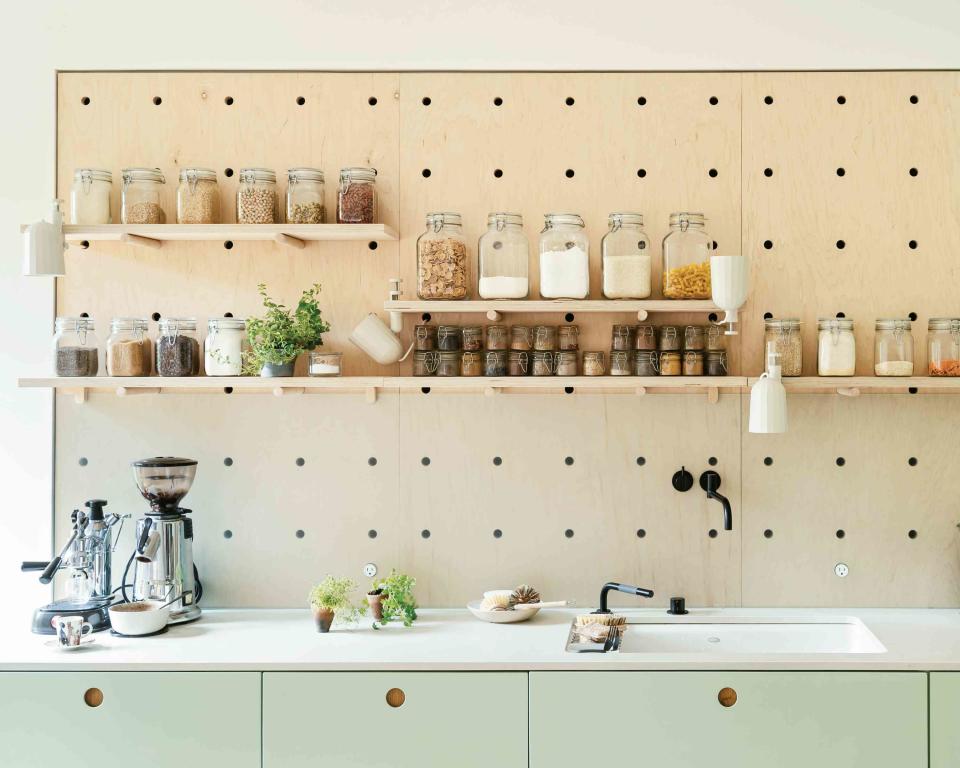
Photography by Matthew Williams/ Design by Ruth Mandl and Bobby Johnston of CO Adaptive
When we heard that the Remodelista team was coming out with a new book all about designing a less wasteful, more sustainable home, we knew this would be the kind of guidebook we reference again and again. So far, the beautiful photography by Matthew Williams has us dreaming of moving to an off-the-grid tree house, while the practical tips written by Margot Guralnick and Fan Winston are inspiring us to rethink our real-life homes.
The Low-Impact Home: A Sourcebook for Stylish, Eco-Conscious Living offers up advice for both more sustainable renovations and more eco-friendly everyday habits. With recommendations for every single room in the house, it's the ideas for the kitchen—ranging from eco-friendly countertop materials to a wool dish-drying mat—that are sparking our next home makeovers big and small. Read on for the sage kitchen tips from The Low-Impact Home.
:
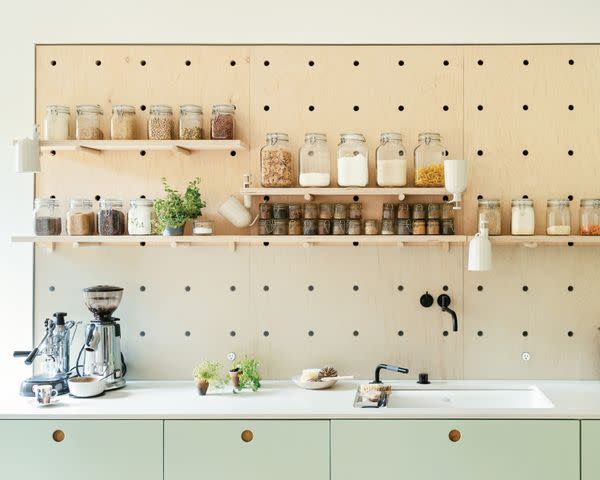
Photography by Matthew Williams
When remodeling the hardest-working room in the house, prioritize green materials and energy-efficient parts. And if you’re in maintenance mode, consider impactful tweaks, from swapping out plastics to clearing indoor pollution. For inspiration, here’s the kitchen that architects Ruth Mandl and Bobby Johnston of CO Adaptive designed for their Brooklyn passive house (pictured, above).
Consider replacing just the cabinet doors. The IKEA cabinets here are fronted with painted oak drawers and doors by Reform, a kitchen company working toward 100 percent sustainable materials and practices. If you do decide to start fresh, cabinets of reclaimed wood or locally grown wood that has been certified by the Forest Stewardship Council (FSC) are the gold standard. Bamboo, a fast-growing grass, is also good.
Skip the granite. Three better choices: paper composite (the pressed-pulp surface often used in science labs; manufacturers include Richlite and PaperStone), reclaimed wood, and ceramic or porcelain tile. Responsibly mined local stone is also worth considering, as is Greenguard-certified Caesarstone, shown here, a product made of quartz.
Not all plywood is created equal. This pegboard wall is made of FSC-certified, maple-faced ApplePly, a high-grade plywood produced with soy instead of urea-formaldehyde or phenol-formaldehyde—the off-gassing of these common binders can have short- and long-term health consequences.
Potted herbs thrive in sunny kitchens. Instead of letting cut cilantro turn to slime in your fridge, grow your own; snip only what you need when you need it, and watch it grow back.
Any glass containers will do for pantry staples. Instead of recycling jars, save them. For display and stackability, though, there’s something to be said for uniformity: shown here are Fido jars by Bormioli Rocco.
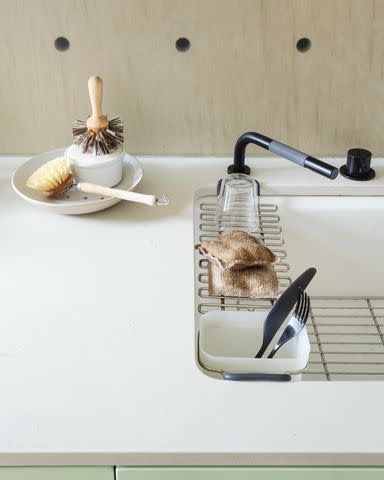
Photography by Matthew Williams
6. Swap in a low-flow faucet. Choose one with a flow rate that doesn’t exceed 2.2 gallons (8.3 liters) per minute, such as this one by Vola, a pull-out spray model for ease when cleaning the sink. To make an existing faucet much more efficient, simply screw on an aerator: they cost less than $20 and don’t require a plumber to install.
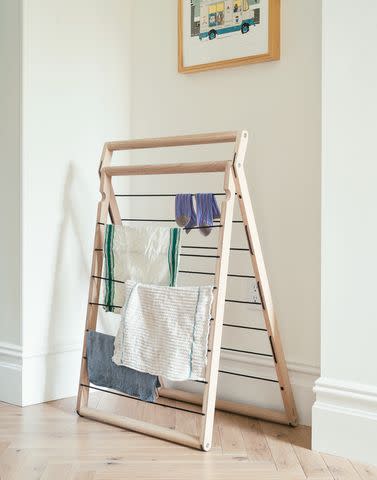
Photography by Matthew Williams
7. Borrow from the laundry room. Drying racks come in handy in the kitchen for dish towels, rags, beeswax food wraps, and more. The standing version shown here is Skagerak’s portable Dryp rack in solid oak.
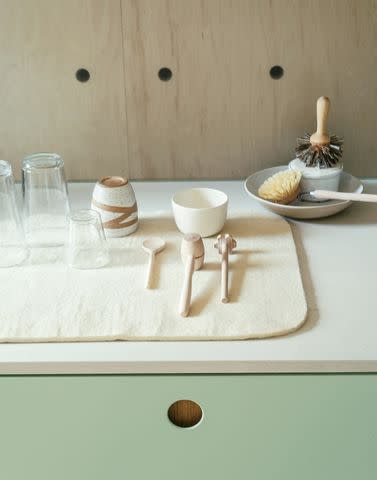
Photography by Matthew Williams
8. Meet the wool dish-drying mat. Wool is an absorbent and naturally mold- and mildewresistant material that makes a presentable gathering spot for drying pots, pans, delicate stemware, and other items that can’t go in the dishwasher. This durable mat, from the Sonoma Wool Company, is made of undyed, 100 percent American wool.
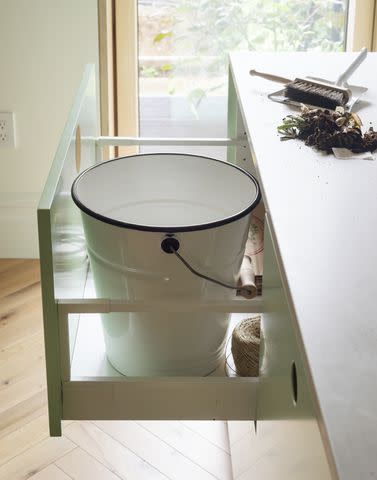
Photography by Matthew Williams
9. Integrate the compost pail. Compost receptacles needn’t hog counter space; here, a bucket with a cover stands in a tall drawer right under the counter. Its contents are dumped into a Subpod composter in the backyard for use in the family’s small garden.
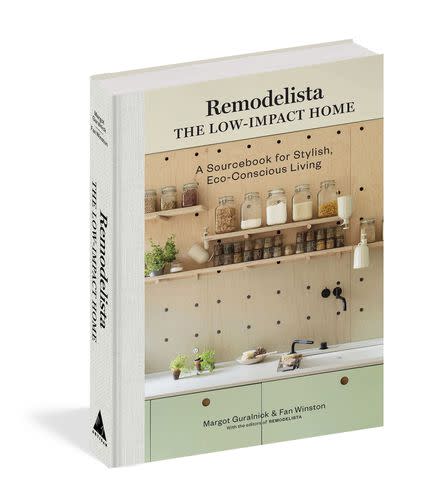
Photography by Matthew Williams
Excerpted from Remodelista: The Low-Impact Home by Margot Guralnick and Fan Winston with the editors of Remodelista (Artisan Books). Copyright © 2022. Photographs by Matthew Williams.
For more Real Simple news, make sure to sign up for our newsletter!
Read the original article on Real Simple.

